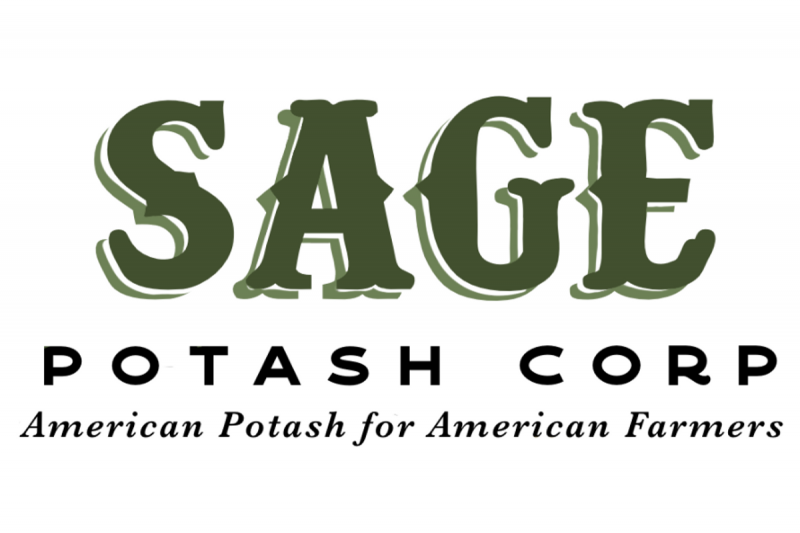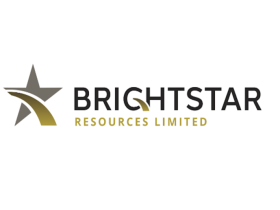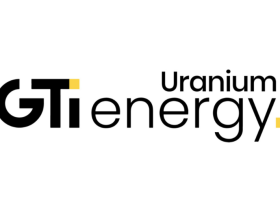Overview
Potash is an essential component for growing the food you eat every day. It is a potassium-rich mineral that supports the global agriculture industry. Roughly 95 percent of all potash is used in fertilizers to promote plant growth, boost crop yields, and build disease resistance. As a result, potash is a vital tool to combat food insecurity — a situation that affects 800 million people worldwide — by ensuring the best possible yield of every crop.
The United States is the largest global consumer of this potassium-rich mineral, yet it imports 93 percent of its potash. Except for Canada, most of the world’s potash comes from high-risk jurisdictions, such as Belarus, China, and Russia. The COVID-19 pandemic has shed light on the flaws of the just-in-time (JIT) supply chain that many agricultural companies depend on for potash shipments, leading to a realization that the US agricultural sector needs to increase its domestic production of potash dramatically.
Sage Potash (TSXV:SAGE,OTCPINK:SGPTF) is a Canadian company vested solely in the Sage Plain Property and intends, through sustainable mining techniques, to become a prominent domestic potash producer within the Paradox Basin in Utah.
The underrated mineral has a low-risk price cycle due to its consumable nature in the agricultural industry, and the company plans to supply the constant demand for the mineral. An experienced management team leads the company towards developing its world-class asset in Utah.
The company’s flagship project, Sage Plain Potash Property, is located in the Paradox Basin, potentially containing roughly two billion tons of potash., as well as super saturated (40 percent minerals, 60 percent water) multi-commodity brines containing valuable minerals including Lithium, Bromine and Potassium. Utah is a mining-friendly jurisdiction with a steady supply of skilled workers. In addition, the project has a robust infrastructure that includes road and electricity access that facilitates faster exploration and development.
In 2023, Sage Potash acquired a potash land portfolio in Utah consisting of over 88,000 acres of state and private mineral leases and BLM prospecting permit applications. Previous discoveries in the area include drill holes with core samples identifying two flat potash beds featuring high potash grades with favorable commercial characteristics. Inferred resource for upper potash bed, cycle 18: 159.3 million metric tonnes (MMT), grading 42.67 percent potassium chloride (KCl) with 0.01 percent carnallite and 0.62 percent insoluble. Inferred resource for lower potash bed, cycle 18: 120.2 MMT, grading 35.77 percent KCl. The company aims to complete a step-out geological hole that will further define the resource estimates and may double as a possible cavern development test well, to advance preliminary engineering and PEA.
Sage Potash understands the importance of a positive environmental, social and governance (ESG) rating. Therefore, the company has embraced a modern method of potash mining that has significantly less impact on the environment than historical methods of mining the mineral.
Rather than underground or strip mining, the company will use in-situ solution extraction of potash-rich brine to the surface for solar or mechanical evaporation and granulation. Using this method, the company is preparing an engineering plan for an initial production of 150,000 tonnes of potash per year. Concurrently, the company will continue to expand overall resource estimates that can support the potential of raising production to 2 to 3 MMT/year.
In an interview, Sage Potash CEO Peter Hogendoorn stated the value proposition of its project’s location. “Utah is a mining-friendly state, and our deposit is ideally situated to meet local and regional potash demand. Local production will save distributors and co-ops $150 to $200 per ton in transportation costs usually incurred from imported potash. Our team has years of experience and knowledge of local fertilizer distribution channels for both off-take and the truckload markets.”
An experienced management team leads Sage Potash towards its goal of becoming a valuable potash supplier in the United States. Peter Hogendoorn has worked in the private and public resource sector for over 30 years and has experienced acquiring and improving assets.
Company Highlights
Sage Potash (TSXV:SAGE, OTCPINK:SGPTF) is an exploration and development company focused on developing a US domestic potash supply.Flagship project: Sage Plain Potash Property in the Paradox Basin, known to host extensive, underdeveloped, world-class potash resources (2 billion tons) Tier 1 potential with a large-scale and high-grade inferred resource of 280 million metric tonnes (MMT) of potash Sage Plain potash property is estimated to produce 150,000 tonnes of potash annually, with plans to expandDomestic production will have $150 to $225 per ton price advantage over Saskatchewan due to rising rail costs caused by cancelled oil pipelines. Partnered with best-in-class engineering firm RESPEC LLC (responsible for planning and execution for the K+S Potash solution mine, the BHP Jansen project, and many other advanced projects, globally). Sage Potash possesses nearly 90,000 acres of potash land in Utah, strategically located in proximity to infrastructure, further lowering transportation costs.Experienced management team with expertise in corporate management, finance and the resource sector
Key Project
Sage Plain Potash Property
The project is located in San Juan County in Utah, with a mining-friendly local government and support community. The Sage Plain Potash Property hosts upper and lower potash beds that have been proven by exploratory drilling, ideal for the modern mining method that helps create high ESG ratings.
Project Highlights:
Confirmed High-Grade Deposits: Sage Potash commissioned an NI 43-101 technical report that confirmed the presence of two layers of high-grade potash deposits.The upper bed is 2,140 meters below the source and returned samples up to 42.7 percent potassium chloride.The lower bed is 2,160 meters below the surface and returned samples up to 35.8 percent potassium chloride.Most global potash mines have grades between 20 percent and 30 percent.Strong Local Infrastructure: The property has road and rail access in place. Additionally, it already has electricity access and nearby availability of oil and gas.Environmentally Friendly Solar Mining Technique: The deposit is ideally suited for in-situ solution mining methods with a significantly reduced environmental impact than historical methods.Defined Mineral Resource: Inferred resource for upper potash bed, Cycle 18: 159.3 MMT, grading 26.96 percent potassium oxide (K2O) /42.67 percent potassium chloride (KCl); Inferred resource for lower potash bed, Cycle 18: 120.2 MMT, grading 22.60 percent K2O/35.77 percent KCI; Total inferred resource: 280MMT of high-grade potash Additional qualities of the resource: Potash beds are continuous based on seismic work and historic well correlationsFormations are flat-lying with minimal dipping Simple geology with minimal faulting based on 2D seismic survey dataCycle 18 average depth of ~2,130 meters (7,000 feet)Cycle 18 combined potash zones of 12.74 meters (41.78 feet)Low insoluble of 0.56 percent, low carnallite content of 0.01 percentFormation temperature of 68 degrees Celsius (154 degrees Fahrenheit)Optimal temperature conditions for solution mining
Project History
Peter Hogendoorn has been involved in financing junior mining and tech companies, both public and private, for the past 30 years. Hogendoorn’s history on this project goes back to 2012 when he successfully brokered a junior venture which financed the initial assembly of 100,000 plus acres of state, BLM (federal) and private mineral leases and seismic data, and successfully drilled Sage Well #1 for approximately US$8 million. Despite the enormous technical success of this well, the project was dropped due to historically low potash prices at the time. The main leases were re-acquired via a competitive bid in 2017 and the project is now ready to take advantage of the current potash market. Hogendoorn is the founder of Sage Potash, which is vested solely in the Sage Plain Property, and intends to become a prominent domestic potash producer, through sustainable solution mining techniques, within the Utah Paradox Basin.
Management Team
Peter Hogendoorn – CEO, Sage Potash Corp.
Peter has 30 years of experience financing junior mining and tech companies, both public and private. Owner of Wrenswood Capital Corp for 20 years investing in and consulting for numerous start-ups and turn-arounds. In 2012, he brokered the original JV, which financed the original Sage Plains project of 100,000 plus acres of state, and private Mineral Leases, acquiring seismic data and successfully drilled Johnson 1 well.
Pat Avery – CEO Sage Potash (US) Corp.
Pat is a current Director of Fertoz, an Australian phosphate company and the owner of LDR Solution LLC, a consulting firm for major mining, chemical, fertilizer, project management, and private equity companies. He spent 15 years with ARCO and Santa Fe Pacific Pipelines in refining and transportation, including 11 years in Senior Positions, managing over 1,500 employees at ten facilities with JR Simplot. Pat was the former President of Intrepid Potash and holds 30 years experience in the industries of petroleum, chemicals, mining, fertilizer, and construction/project management.
J. Patricio Varas – P. Geo. COO & VP of Exploration
Patricio has over 36 years of experience in mineral exploration, project management and corporate leadership. He was part of the discovery team of the Diavik Diamond mine in Canada with Rio Tinto, and the Santo Domingo Sur Copper-Iron deposit in Chile. Furthermore he assisted with the project acquisition and management team that led to the discovery of the world class Santo Domingo Sur copper, iron and cobalt Santo Domingo Sur deposit in Chile with Far West Mining. The Company was acquired in a friendly takeover by Capstone Mining for over $1.1 Billion in 2010. He was the Founder in the Western Potash Corp and its President and CEO. He raised over $240 Million carrying out resource and reserve definition drilling, environmental studies, permitting, feasibility and engineering studies
Matthew Lechtzier, Director, has a substantial background in organizing complex transactions in both public and private markets and handling detailed negotiations at a senior level. Lechtzier was a director of Equity Capital Markets at Jardine Fleming in Hong Kong (later J.P. Morgan) and subsequently honed his skills as a “fixer” as a special advisor to the Chairman of Ivanhoe Capital Corp., where he worked for over 25 years.
Gordon Ellis, Director, has 50 years of experience in the mining industry, helping discover and develop resource assets.
Engineering Consultants
The company’s engineering partners are RESPEC (Consultants for Engineering, Data, Technology, Mining, Water | RESPEC ), a global leader in geoscience, engineering, data and integrated technology solutions for major industry sectors. The engineering team is the same team that managed the initial well and completed the initial resource estimate. RESPEC is highly experienced in developing potash deposits and production engineering.





